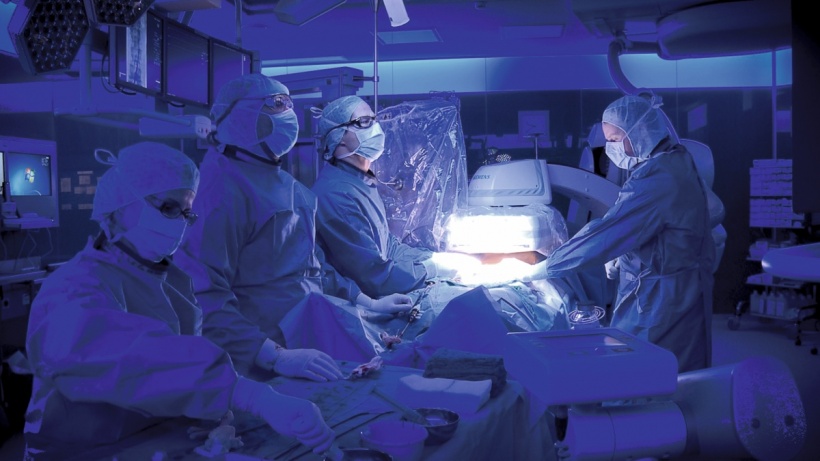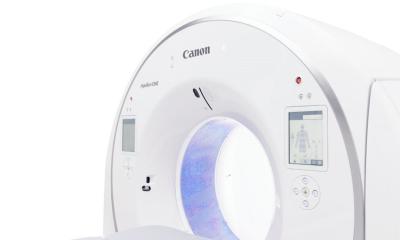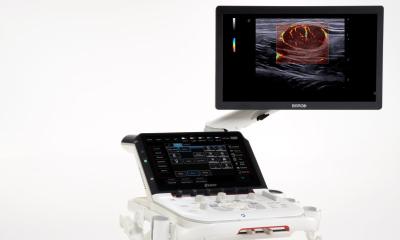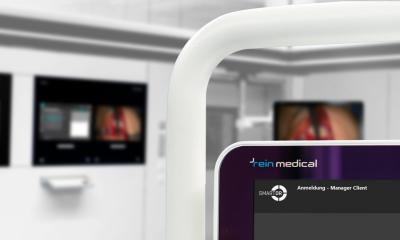Article • Intervention
Hybrid ORs: not equally beneficial for all facilities
The hybrid operating room is one of the most innovative developments in the surgical sector. The combination of interventional and minimally invasive surgical procedures is exciting for many clinical disciplines. The room design, intraoperative imaging techniques as well as interdisciplinary collaboration play a pivotal role in this.
Report: Melanie Günther
The hybrid OR is suited for interventions that require intraoperative imaging, for instance in the form of completion angiography.
Dr. Lars Kock
Clinical trials have already shown that image-guided interventions produce better clinical results and also enable the treatment of new patient groups. Hybrid operating rooms are used in cardiac surgery, vascular and endovascular surgery as well as in neurological and spinal surgery. Intraoperative imaging to perform and assure the quality in complex surgeries plays a central role in this. Next to a few highly specialized operating rooms equipped with MRI and CT scans, intraoperative angiography with mobile C-arms has by now become standard.
Dr. Lars Kock, Head of the Department for Vascular and Endovascular Surgery, knows about the potential of hybrid operating rooms based on the clinical practice at the Albertinen Hospital in Hamburg, Germany. “The hybrid OR is suited for interventions that require intraoperative imaging, for instance in the form of completion angiography. Another application is interventions where one part is open surgery and the other part is a minimally invasive procedure.“ With the help of the C-arm, 2D or 3D images are generated during surgery that can be merged with preoperative CT scans, thus delivering an accurate presentation of the intervention. This cuts down on nephrotoxic contrast agents and reduces the radiation dose for patients and staff.
From planning to implementation
The planning phase is an important determinant of the success or failure of a hybrid OR. “To start with it is crucial to decide which specialty is intended to use the hybrid OR. Is it exclusively to be used by cardiologists or vascular surgeons or by both disciplines? Both of these specialties have a very diverging requirement profile that needs to be considered during the planning process.“
This decision is a significant factor in choosing an operating table for instance. “Cardiologists are used to working with a floating tabletop that’s common in angiography suites. A floating operating table is a huge disadvantage when surgeries are performed in a half-sitting position. In this case, a conventional operating table system with a stationary column where several operating tables can be installed is a better fit. This increases flexibility“, explains Kock.
Cardiologists and vascular surgeons also have different preferences when it comes to the size of the flat detector system. Cardiologists whose focus is primarily on the heart, prefer a smaller detector since it is easier to achieve steeper beam projection angles. Vascular surgeons who provide endovascular treatment of aortas and peripheral blood vessels, prefer to work with a bigger detector since it allows you to map larger sections of the vascular system.
A hybrid operating room is not equally well suited for all hospitals. The type of intended intervention determines the additional benefit of this technology. Hybrid procedures, in particular, that combine catheter techniques with an open surgical procedure benefit from this. Everything else is a waste of resources, according to Kock. He adds that open surgery can be just as well performed in a traditional operating room.
Layout avoids collisions
Setting up a hybrid operating room is not an easy task. You need to decide whether an existing operating room should be newly constructed or remodeled. The availability of adequate space is crucial. “You should allow for 1000 square feet including a central control and equipment room when planning a hybrid OR so that ultimately 750 square feet are allotted to the actual operating room. It must not be any smaller than this since this only increases the risk of potential collisions.“
Cardiology and vascular medicine, in particular, require materials such as stents, stent grafts, wires, catheters or balloons that require space. The infrastructure is, therefore, another factor that needs to be considered when outfitting a hybrid operating room. Short routes make workflow easier. Storage cabinets with glass doors in the hybrid operating room provide better orientation.

Workflow optimization on a broad scale
Even the processes that take place in a hybrid operating room need to be integrated into the planning process from the start. It most notably applies to the position and arrangement of the individual devices. This is the only way to ensure a smooth workflow.
The decision to use a laminar air flow system impacts how the x-ray equipment is being installed for example. Ceiling mounted equipment frequently obstructs the ventilation system that subsequently is no longer able to work as efficiently as it should. An effect that has a negative impact on the risk of infection.
Kock also suggests to “consider whether a unit with several smaller monitors or a large display is more conducive to an optimal workflow when choosing screens“.
Hype or real benefit?

Hybrid operating rooms are frequently downplayed as mere marketing tools for hospitals and clinics. This much is clear: not every facility needs a hybrid operating room, only those that perform complex surgeries. This particularly applies to large heart and vascular centers that regularly perform endovascular interventions for aortic and mitral valves or offer complex endovascular and aortic surgical procedures. At the same time, a reimbursement process also needs to be in place. Ultimately, the acquisition and maintenance of a hybrid operating room are a financial decision since investment costs and maintenance expenses still remain high.
Other specialties also increasingly discover the benefits of hybrid operating rooms. The required system components for preoperative, intraoperative and postoperative imaging, patient positioning, visualization and data integration, as well as the adherence to strict hygiene regulations, are already available. Kock is confident that further improvements will increase the benefits of hybrid operating rooms. “The existing technology is great and continues to advance. X-ray technology, for instance, continues to improve: the image quality increases while exposure rates decrease. Various manufacturers also provide the relevant software and programs to combine preoperatively and intraoperatively generated images.”
08.08.2016










